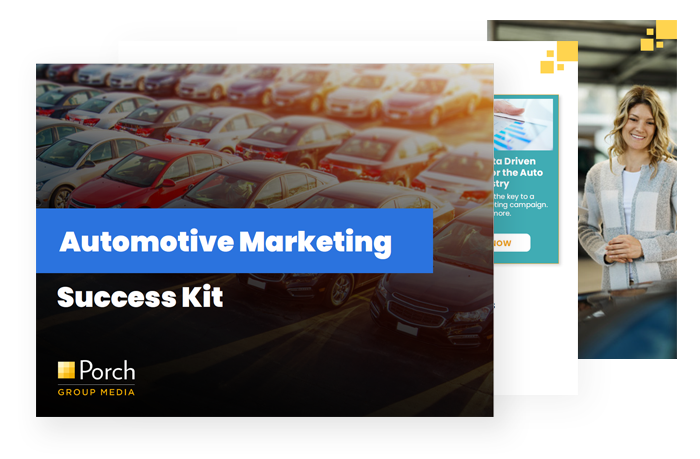Reaching the right consumers with the right message is at the heart of any successful marketing strategy. This is where audience segmentation comes into play.
Long gone are the days of one-size-fits-all advertising campaigns. Savvy dealerships are leveraging audience segmentation techniques to connect with potential customers in a more personalized and effective way.
Why Audience Segmentation Matters for Automotive Dealerships
Audience segmentation is the process of dividing your target market into smaller, more manageable groups based on shared characteristics, interests, and behaviors. This allows you to better understand what drives their buying decisions, and their preferences in terms of vehicle type, price range, and more.
Once you know who your audience segments are, you can create customized and personalized marketing messages that resonate with each group. For example, a family-oriented segment may respond better to safety and space-related features, while a segment of young professionals might prioritize technology and style.
When you personalize your marketing messages to specific segments, you are more likely to capture their attention and drive them to take action, and more car sales.
In a survey by Acxiom, 74% of survey respondents said that a more personalized experience would influence the brand they choose when purchasing a vehicle.
Further, 31% of respondents say the seamlessness of the customer experience influenced their last vehicle purchase, and 34% say they would have bought a different car if the customer experience had been more seamless and personalized.
It’s also important to note that segmentation isn’t just for acquiring new customers; it’s also valuable for retaining existing ones. By understanding your customers’ preferences and providing them with personalized offers and experiences, you can foster long-term loyalty.
Dealership Audience Segments to Consider
Demographic Segmentation
Demographic segmentation involves categorizing your audience based on quantifiable characteristics such as age, household composition, and families. Dealerships can target various demographic segments, including:
- Specific age groups, such as millennials, Gen X, or baby boomers, allow you to align their messaging with the preferences and priorities of each generation.
- Household composition such as families with children. This segment often requires vehicles with ample space, advanced safety features, and entertainment options to keep kids comfortable during trips. Alternatively, couples without children or empty nesters may be more interested in more luxurious and comfortable vehicles, that focus on style and sophistication.
Lifestyle Segmentation
Lifestyle or psychographic segmentation takes into account the psychological and lifestyle factors that influence consumer behavior. Dealerships can target:
- Audience segments based on hobbies, interests, and lifestyle choices. For example, outdoor enthusiasts may be interested in SUVs or trucks, while eco-conscious consumers may prefer electric or hybrid vehicles.
- Consider the values and beliefs of your potential customers. You may want to build specific segments for those who prioritize safety, while others may seek status and luxury.
Behavioral Segmentation
For audiences you have had previous engagement with, behavioral segmentation divides your audience based on their past behaviors, including their interactions with your dealership. Targeting options include:
- Customers who have previously purchased from your dealership or have shown interest in specific vehicle models.
- Identifying customers who buy vehicles frequently, such as every few years, and offering them incentives or personalized deals to encourage repeat purchases.
- Use data from website visits, social media engagement, and online searches to target consumers who have shown interest in your dealership’s offerings.
Purchase Intent
Creating audience segments based on stages of the buying journey is also a highly effective strategy to target car shoppers across the purchase journey. Segments could include:
- Early-Stage Shoppers: Target consumers who are in the research phase, providing them with educational content and information about your dealership’s offerings.
- Ready-to-Buy: Tailor messages to consumers who are actively looking to make a purchase, offering incentives and promotions to close the deal.
New Movers
New movers are in the market for numerous items, and yes, cars and automotive repair services are among those items.
According to a Zillow survey, new movers are 90% more likely than established residents to purchase a car within the first year of their move. Consider these additional stats regarding movers and automotive businesses:
- Auto dealers and repair shops rank among the top five most sought-after gift certificates included within new mover marketing welcoming packages.
- Hundreds of auto retailers and repair shops nationwide generate an average monthly response rate of 12% using new mover marketing programs.
- Auto-focused new mover offers like “one free oil change” and “one free car wash” rank among the top 10 best-performing offers.
6 Steps to Dealership Audience Segmentation
1. Data Collection
Start by gathering data about your customers. This can include demographic information, purchase history, online behavior, and more. The more data you have, the better you can segment your audience.
Also include additional types of data such as third-third sources on consumer audiences and automotive marketing data that detail types of vehicles in a consumer’s household.
2. Segmentation Criteria
Determine the criteria and various segments by which you will divide your audience. Don’t limit yourself to just one segment. Also, consider unique aspects relevant to your dealership’s market.
3. Create Personas
Develop detailed buyer personas for each segment. A persona is a fictional representation of a typical customer within a segment. It should include demographic information, preferences, challenges, and goals.
4. Tailor Content and Campaigns
Craft marketing content and campaigns that cater to the specific needs and preferences of each persona or segment. Use the language, imagery, and channels that resonate most with each group.
5. Test and Refine
Continuously monitor the performance of your segmented campaigns. Use analytics to measure conversion rates, engagement, and other relevant metrics. Adjust your strategies based on the data to optimize results.
6. Automation
Implement marketing automation software to streamline your segmentation efforts. These tools can help you manage customer data, send personalized communications, and track interactions.
Conclusion
Audience segmentation is a powerful tool in your dealership’s marketing strategies. It allows you to connect with your potential customers on a deeper level, offering them the right message at the right time. By investing in audience segmentation, your dealership can not only increase sales but also build long-lasting relationships with your customers, creating a win-win situation for both parties. Stay ahead of the competition and drive success by putting audience segmentation at the forefront of your marketing strategy.
Automotive Audience & Marketing Solutions
Porch Group Media is a leader in automotive audiences and marketing solutions. Let us help you create a solution to rev up your digital marketing programs and drive sales.





